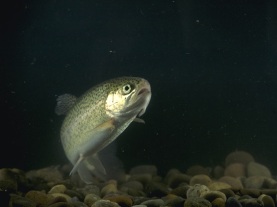Norway to research sustainable aquaculture

A new aquaculture R&D programme developed by the Norwegian Research Council is to focus on the sustainability of Norway’s vast fishing industry. It is time, because world consumption of fish is increasing at fast pace.
The Norwegian Research Council has announced a revised programme of R&D in aquaculture, which puts the emphasis on ensuring that the industry is developed in a way that is sustainable.
Pressing problems that need to be solved to ensure sustainability and allow the sector to grow include, sea lice infestations, discharges of pollution and escapes of production fish into the wild.
While Norway is currently the world’s leading producer and exporter of salmon and rainbow trout and an important global supplier of expertise, technology and equipment for aquaculture, the country accounts for only 1.7% of the total aquaculture production volume. Given this the vision of turning Norway into the world’s leading aquaculture nation, is ambitious.
Many players involved
The revised work programme – Aquaculture – An Industry in Growth, is the result of a broad-based process involving industry players and the government.
The Research Council says the inclusive, broad-based process leading up to the revised work programme has helped to raise industry awareness and increase willingness to take responsibility for generating new knowledge.
“The time is ripe for stepping up research efforts and clarifying the division of responsibility between the public and the private sector,” says Research Board member Paul Birger Torgnes.
Priorities
The new work programme sets out six thematic priority areas:
- Sustainable seafood production
- Healthy fish
- Feeds of the future
- Other production species
- Environment-friendly aquaculture technology
- Genetics and selective breeding
Consumption soaring
Fish consumption around the world is soaring to an all time high, the United Nations Food and Agricultural Organisation (FAO) says in its latest assessment of the global seafood industry.
However, the FAO’s surprising finding is that fish farming is now starting to overtake the traditional trawl catch method of fishing in terms of total production.
Fish consumption climbed to nearly 17 kilograms per person, says the FAO report. In 2009 145-million tonnes of fish were caught and consumed, up by five million tonnes from the previous year.
But aquaculture now employs 10.8 million workers – or some 24% of all fishing related employment(1990 – 4 million workers).
Traditional fishing stagnates
The FAO says that traditional fishing is starting to stagnate. Dwindling stocks due to overfishing and stricter catch quotas are almost certainly the two main causes for this.
The report says that the increase in fish consumption was mainly due to the surge in fish farming which has made many once expensive fish such as salmon and shellfish more readily and cheaply available.
The report adds: "The status of global fish stocks has not improved. But people have never eaten as much fish and more people than ever are employed in or depend on the fish farming sector."
The report also highlights the growth in illegal and unregulated fishing around the globe.











